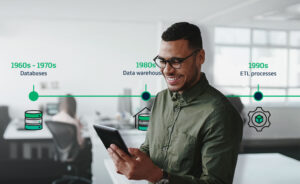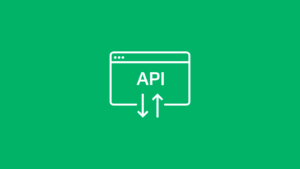A look back at 7 Gartner 2023 IT automation trend predictions

Gartner’s 2023 IT automation trends
In 2023, Gartner shared forecasts for the automation space around hyperautomation, hybrid infrastructure tools and the challenges of digital transformation. Now that 2023 has come to a close, let’s see if Gartner’s predictions came to fruition.
1. Internet of behaviors (IoB) programs
Prediction: Over half of the world’s population will be subject to at least one IoB program by the end of 2025.
Status: Currently, IoB programs are gaining traction, especially in the private sector. While it’s challenging to measure the exact percentage, there’s a noticeable increase in the adoption of IoB initiatives, particularly in consumer-centric industries. Examples include healthcare monitoring to track and improve patient behaviors; financial monitoring to catch suspicious activity and prevent fraud; employee monitoring to identify compliance or training issues for better support or workflows; and student monitoring to see how students are engaging and performance metrics to intervene with success programs.
2. Shift to cloud infrastructure
Prediction: 40% of all enterprise workloads will be deployed in cloud infrastructure and platform services by 2024.
Status: The cloud adoption rate has surged, surpassing the predicted 40%. Many organizations have embraced cloud infrastructure for its scalability and efficiency, aligning with the growing trend of digital transformation. A great example of this would be the number of organizations moving their ERP, the backbone of their business to the cloud. RISE with SAP is a notable program requiring customers to adapt to their S/4HANA cloud offering.
3. AIOps for automated change risk analysis
Prediction: By 2024, 40% of product and platform teams will use AIOps for automated change risk analysis in DevOps pipelines, reducing unplanned downtime by 20%.
Status: The adoption of AIOps is on the rise, contributing to streamlined DevOps pipelines. While specific statistics might vary, the reduction in unplanned downtime aligns with the overarching goal of enhancing operational efficiency. AIOps empowers organizations to streamline IT operations, enhance visibility and control while proactively managing IT environments for consistent service delivery and SLA achievement.
4. Container management
Prediction: Over 75% of large enterprises in mature economies will use container management by 2024.
Status: Containerization has become a mainstream practice, with a significant percentage of large enterprises incorporating container management into their IT strategies. Container orchestration platforms such as Kubernetes became essential components of CI/CD workflows, enabling organizations to automate and optimize software delivery pipelines.
5. Hyperautomation initiatives
Prediction: Organizations will lower operational costs by 30% by combining hyperautomation technologies with redesigned operational processes.
Status: Hyperautomation has evolved rapidly, driven by the need for accuracy and productivity, especially in the wake of economic uncertainty. RPA bots have been automating data entry, invoice processing, customer support inquiries and employee onboarding processes for some time. That’s been elevated to more advanced job scheduling and workload automation. These platforms are designing, orchestrating and automating complex workflows spanning multiple systems, applications and services. Organizations are able to automate end-to-end business processes, integrating frustratingly disparate systems and vastly improving collaboration across teams.
AI and machine learning (ML) are now in the game, automating processes and achieving cost savings and operational efficiency. Machine learning models are now being used for predictive maintenance, demand forecasting, fraud detection and customer churn prediction.
6. Evolution of the role of CIO
Prediction: One in 10 technology leaders by 2025 will find themselves the de facto leader of customer experience for their organization.
Status: The role of the CIO is indeed evolving, with a focus on customer experience. While exact numbers may vary, more technology leaders are taking on responsibilities related to customer experience, reflecting the increasing integration of IT with overall business strategy.
7. Digital wall challenges and new computing paradigms
Prediction: Traditional computing technologies will hit a digital wall by 2025, necessitating a shift to new computing paradigms.
Status: Organizations are indeed grappling with the challenges posed by the “digital wall.” The exploration of new computing paradigms, including neuromorphic computing, is underway, signaling a recognition of the limitations of current technologies.
Conclusion – Automation in 2024
Gartner’s predictions are manifesting in various degrees across industries. The overarching theme is a swift embrace of digital transformation, with automation playing a pivotal role in reshaping IT landscapes. As we move forward, the trends identified by Gartner continue to guide organizations in navigating the evolving technology landscape.







